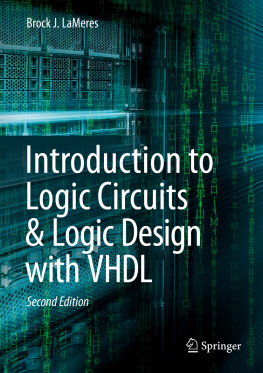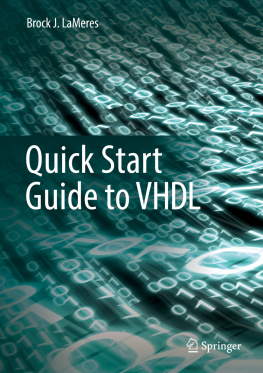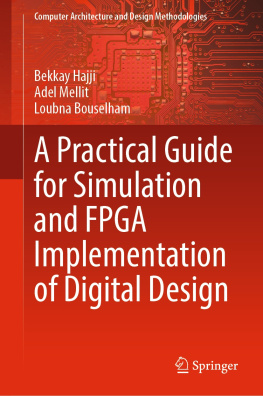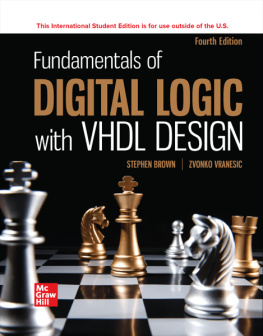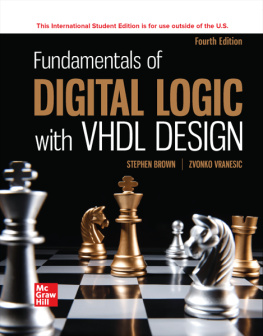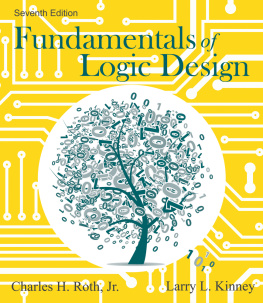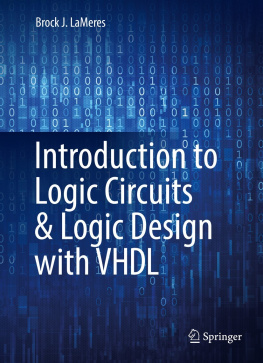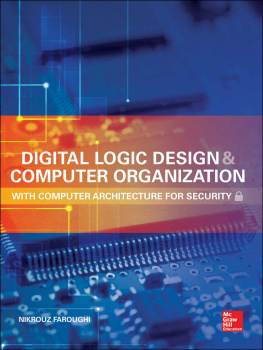Brock J. LaMeres - Introduction to Logic Circuits & Logic Design with VHDL
Here you can read online Brock J. LaMeres - Introduction to Logic Circuits & Logic Design with VHDL full text of the book (entire story) in english for free. Download pdf and epub, get meaning, cover and reviews about this ebook. year: 2019, publisher: Springer International Publishing, genre: Children. Description of the work, (preface) as well as reviews are available. Best literature library LitArk.com created for fans of good reading and offers a wide selection of genres:
Romance novel
Science fiction
Adventure
Detective
Science
History
Home and family
Prose
Art
Politics
Computer
Non-fiction
Religion
Business
Children
Humor
Choose a favorite category and find really read worthwhile books. Enjoy immersion in the world of imagination, feel the emotions of the characters or learn something new for yourself, make an fascinating discovery.
- Book:Introduction to Logic Circuits & Logic Design with VHDL
- Author:
- Publisher:Springer International Publishing
- Genre:
- Year:2019
- Rating:4 / 5
- Favourites:Add to favourites
- Your mark:
- 80
- 1
- 2
- 3
- 4
- 5
Introduction to Logic Circuits & Logic Design with VHDL: summary, description and annotation
We offer to read an annotation, description, summary or preface (depends on what the author of the book "Introduction to Logic Circuits & Logic Design with VHDL" wrote himself). If you haven't found the necessary information about the book — write in the comments, we will try to find it.
Introduction to Logic Circuits & Logic Design with VHDL — read online for free the complete book (whole text) full work
Below is the text of the book, divided by pages. System saving the place of the last page read, allows you to conveniently read the book "Introduction to Logic Circuits & Logic Design with VHDL" online for free, without having to search again every time where you left off. Put a bookmark, and you can go to the page where you finished reading at any time.
Font size:
Interval:
Bookmark:
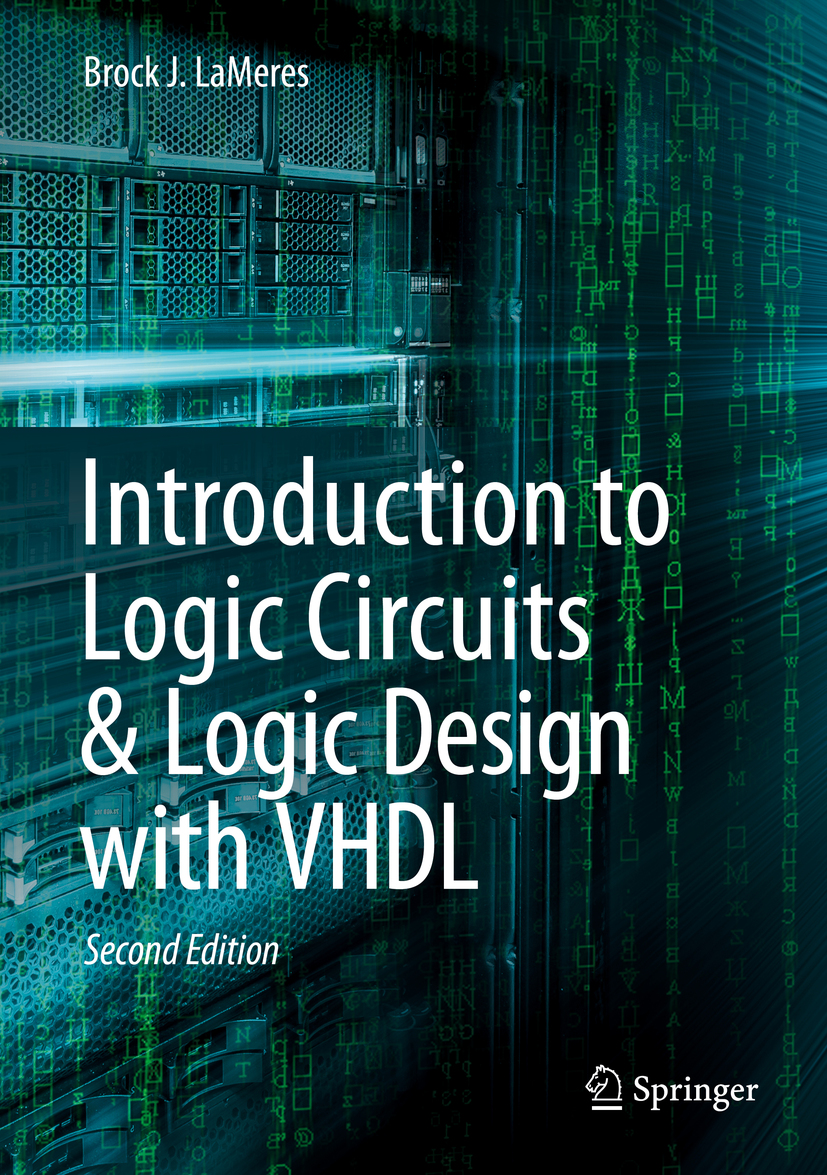

Cover credit: ID 98722794 Vladimir Timofeev Dreamstime.com
This Springer imprint is published by the registered company Springer Nature Switzerland AG
The registered company address is: Gewerbestrasse 11, 6330 Cham, Switzerland
The overall goal of this book is to fill a void that has appeared in the instruction of digital circuits over the past decade due to the rapid abstraction of system design. Up until the mid-1980s, digital circuits were designed using classical techniques. Classical techniques relied heavily on manual design practices for the synthesis, minimization, and interfacing of digital systems. Corresponding to this design style, academic textbooks were developed that taught classical digital design techniques. Around 1990, large-scale digital systems began being designed using hardware description languages (HDL) and automated synthesis tools. Broad-scale adoption of this modern design approach spread through the industry during this decade. Around 2000, hardware description languages and the modern digital design approach began to be taught in universities, mainly at the senior and graduate level. There were a variety of reasons that the modern digital design approach did not penetrate the lower levels of academia during this time. First, the design and simulation tools were difficult to use and overwhelmed freshman and sophomore students. Second, the ability to implement the designs in a laboratory setting was infeasible. The modern design tools at the time were targeted at custom integrated circuits, which are cost- and time-prohibitive to implement in a university setting. Between 2000 and 2005, rapid advances in programmable logic and design tools allowed the modern digital design approach to be implemented in a university setting, even in lower-level courses. This allowed students to learn the modern design approach based on HDLs and prototype their designs in real hardware, mainly field programmable gate arrays (FPGAs). This spurred an abundance of textbooks to be authored teaching hardware description languages and higher levels of design abstraction. This trend has continued until today. While abstraction is a critical tool for engineering design, the rapid movement toward teaching only the modern digital design techniques has left a void for freshman- and sophomore-level courses in digital circuitry. Legacy textbooks that teach the classical design approach are outdated and do not contain sufficient coverage of HDLs to prepare the students for follow-on classes. Newer textbooks that teach the modern digital design approach move immediately into high-level behavioral modeling with minimal or no coverage of the underlying hardware used to implement the systems. As a result, students are not being provided the resources to understand the fundamental hardware theory that lies beneath the modern abstraction such as interfacing, gate-level implementation, and technology optimization. Students moving too rapidly into high levels of abstraction have little understanding of what is going on when they click the compile and synthesize button of their design tool. This leads to graduates who can model a breadth of different systems in an HDL but have no depth into how the system is implemented in hardware. This becomes problematic when an issue arises in a real design and there is no foundational knowledge for the students to fall back on in order to debug the problem.
This book addresses the lower-level foundational void by providing a comprehensive, bottoms-up coverage of digital systems. The book begins with a description of lower-level hardware including binary representations, gate-level implementation, interfacing, and simple combinational logic design. Only after a foundation has been laid in the underlying hardware theory is the VHDL language introduced. The VHDL introduction gives only the basic concepts of the language in order to model, simulate, and synthesize combinational logic. This allows the students to gain familiarity with the language and the modern design approach without getting overwhelmed by the full capability of the language. The book then covers sequential logic and finite-state machines at the component level. Once this secondary foundation has been laid, the remaining capabilities of VHDL are presented that allow sophisticated, synchronous systems to be modeled. An entire chapter is then dedicated to examples of sequential system modeling, which allows the students to learn by example. The second part of the textbook introduces the details of programmable logic, semiconductor memory, and arithmetic circuits. The book culminates with a discussion of computer system design, which incorporates all of the knowledge gained in the previous chapters. Each component of a computer system is described with an accompanying VHDL implementation, all while continually reinforcing the underlying hardware beneath the HDL abstraction.
The organization of this book is designed to follow the way in which the material is actually learned. Topics are presented only once sufficient background has been provided by earlier chapters to fully understand the material. An example of this learning-oriented organization is how the VHDL language is broken into two chapters. Chapter to fully understand the operation of the arithmetic circuitry, so its introduction is postponed.
This incremental, just-in-time presentation of material allows the book to follow the way the material is actually taught in the classroom. This design also avoids the need for the instructor to assign sections that move back and forth through the text. This not only reduces course design effort for the instructor but allows the student to know where they are in the sequence of learning. At any point, the student should know the material in prior chapters and be moving toward understanding the material in subsequent ones.
Font size:
Interval:
Bookmark:
Similar books «Introduction to Logic Circuits & Logic Design with VHDL»
Look at similar books to Introduction to Logic Circuits & Logic Design with VHDL. We have selected literature similar in name and meaning in the hope of providing readers with more options to find new, interesting, not yet read works.
Discussion, reviews of the book Introduction to Logic Circuits & Logic Design with VHDL and just readers' own opinions. Leave your comments, write what you think about the work, its meaning or the main characters. Specify what exactly you liked and what you didn't like, and why you think so.

